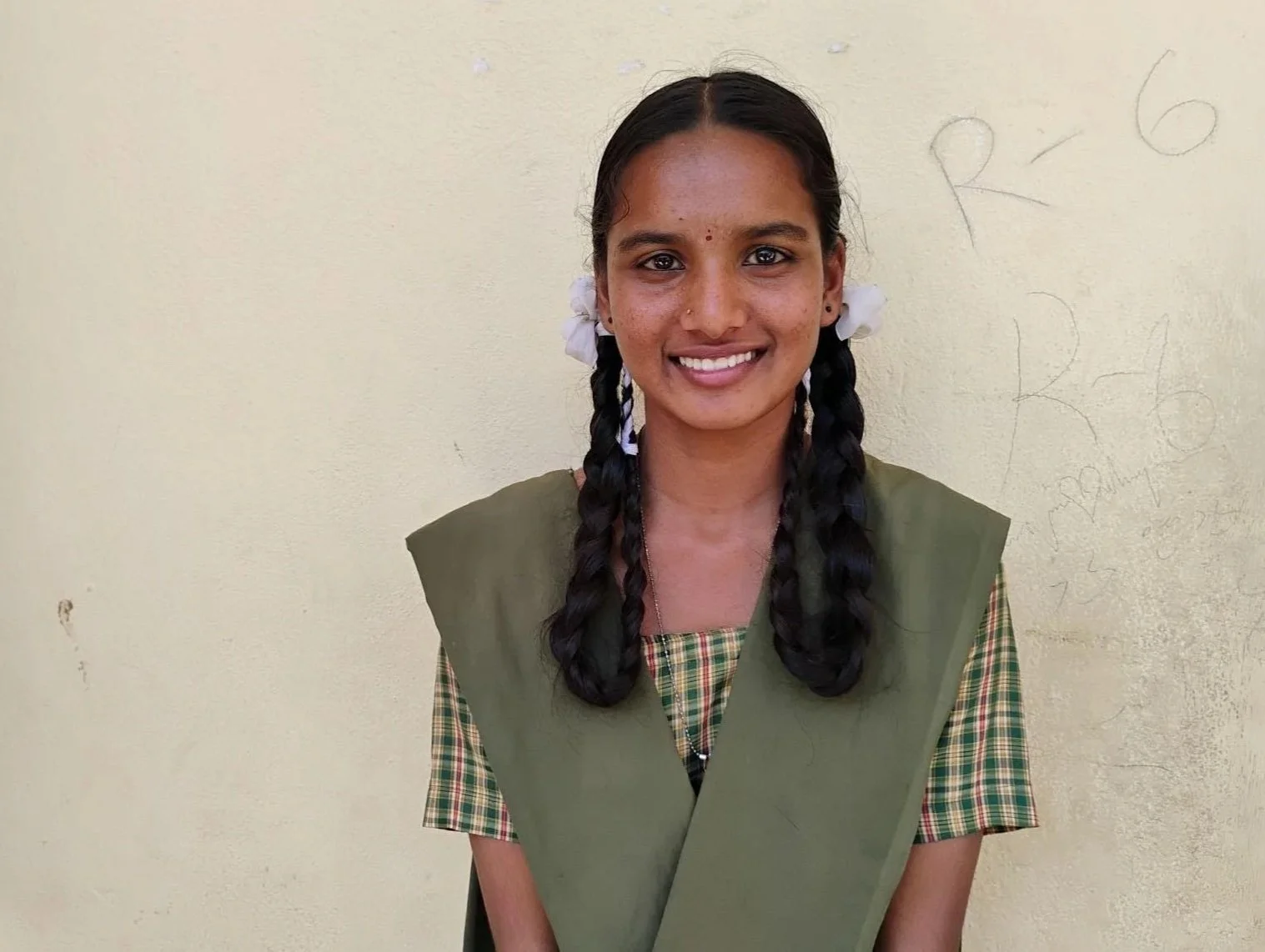Coding a Future of Possibilities
Yashaswini, a ninth-grade student from Hoskote, India, used MIT App Inventor to create the Unified Identity App (UIA)—a tool designed to track school dropouts and support their return to the classroom.
Yashaswini, a 9th-grade student from Hoskote, India.
Growing up in a modest one-bedroom apartment in Hoskote, India, with her parents, younger brother, and grandmother, Yashaswini developed a keen interest in computers. While many women in her extended family were married off at a young age, her parents were determined that she would write a different story—one where education is a right, not a privilege.
First Lines of Code
That story began to take shape in ninth grade, when she first stumbled upon Scratch, a coding platform that opened up a whole new world. “I love how I can build anything just by writing these lines of code,” she says. With no personal laptop at home, she borrowed her father’s smartphone to practice coding on platforms like Tinkercad and Trinket. It wasn’t ideal, but it was enough.
Her curiosity deepened during visits to her aunt’s house. A computer science engineer working for a Dubai-based firm, her aunt had a spare laptop and the willingness to teach. Those evenings, learning Python from her aunt in a simple, engaging way, sparked something in Yashaswini. Watching a woman in her own family succeed in tech made her realize what was possible. She decided to pursue computer science—not just for the stability it offered, but because it gave her the tools to solve real-world problems.
“Whenever I walk on the road, I observe my surroundings and think of possible solutions to social problems.”
For Yashaswini, code isn’t just about logic; it’s also about impact. “Whenever I walk on the road, I observe my surroundings and think of possible solutions to social problems,” she says. That drive to fix what’s broken led her to the idea of an app.
Yashaswini developed Unified Identity App (UIA), an app designed to track school dropouts and support their reintegration into the education system.
The Unified Identity App: A Path Back to School
She began building the Unified Identity App (UIA), an app designed to track school dropouts and support their reintegration into the education system. The app works as a database for children from birth to 16 years, storing everything from vaccination records to school enrollment, attendance, and exam results. If a child’s attendance drops, or if they fail their exams, the system sends an alert to the child helpline, triggering intervention from stakeholders.
Yashaswini built the app herself, under the guidance of her mentor, using the MIT App Inventor platform. The app features six intuitive screens with functions that allow users to upload documents, monitor dropout rates across Karnataka, access detailed student information, and register children into the system. “I believe this app can help alleviate the problems of child labour I witnessed around me,” she says. The app was her way of fighting back against the injustices she saw every day.
She saw two young boys working at a garage near her home, who shared that they had dropped out of school in seventh and eighth grade to help support their families. On another occasion, she noticed a 10-year-old girl washing dishes at a restaurant. When Yashaswini asked about her, she learned the girl had never been enrolled in school—her single mother relied on the extra income. “It made me feel angry and helpless,” she says.
She’s already thinking of where to take the app next. Drawing from her experience at the Block Resource Centre (BRC) in her previous school—a space where disabled children receive education, support, and free meals—Yashaswini wants to add an online learning feature to the UIA. With video lessons and remote assessments, she hopes the app can help children who aren’t able to attend school in-person continue their education from home.
“I believe this app can help alleviate the problems of child labour I witnessed around me.”
Besides working on her app, she is equally passionate about tackling issues that directly impact her community, especially those affecting girls and women. She’s deeply aware of the subtle battles they face, particularly around menstrual health. After seeing her cousin discouraged from attending school during her period, Yashaswini became determined to break the stigma. She now advocates for greater awareness around hygiene and nutrition, so that no girl has to choose between her dignity and her education.
Yashaswini and her classmates chatting at school.
One of Yashaswini’s role models is astronaut Sunita Williams, whose nine-month space mission left a lasting impression on her. “I want to achieve something on that level,” she says. Looking ahead, she envisions starting her own company after completing her degree in computer science. Her goal is to build a company that designs affordable, accessible housing for families like hers—using technology and creativity to tackle real-world challenges. Her journey is just beginning, but her drive to make a difference continues to grow.



